In the realm of 3D modeling, UV mapping stands as a crucial technique that breathes life into virtual creations. It’s the art of transforming 3D models into 2D representations, allowing textures to seamlessly adhere to the surfaces, much like wrapping paper conforms to a gift.
Proper UV mapping is paramount for achieving realistic textures, avoiding distortion, and ensuring efficient texturing. In this comprehensive guide, we’ll delve into the intricacies of UV mapping, providing you with six essential tips to elevate your workflow and produce stunning 3D models.
From understanding the fundamentals of UV mapping to mastering advanced techniques, we’ll equip you with the knowledge and skills to tackle even the most intricate models with confidence. Whether you’re a seasoned 3D artist or just starting your journey, this guide will empower you to create visually captivating models that captivate audiences and bring your artistic visions to life.
Understanding UV Mapping
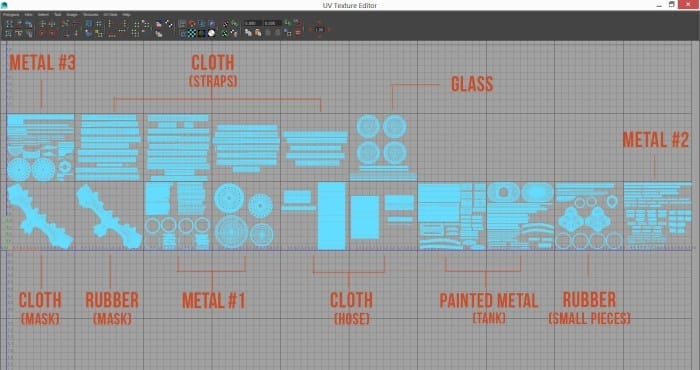
In the realm of 3D modeling, UV mapping plays a pivotal role in transforming 2D textures onto 3D objects, creating a seamless and realistic visual experience. It establishes a correspondence between the 3D model’s surface and a 2D plane, known as the UV space, allowing textures to be applied accurately and without distortion.
Proper UV mapping is paramount in achieving high-quality results. It ensures that textures align seamlessly with the model’s geometry, avoiding unwanted stretching or tearing. Additionally, it optimizes texture resolution, minimizing unnecessary texture memory usage while maintaining visual fidelity.
Significance of Proper UV Mapping
- Achieving Realistic Textures: Proper UV mapping allows textures to be applied precisely to the model’s surface, resulting in realistic and visually appealing results.
- Preventing Distortion: By carefully aligning the UVs with the model’s geometry, distortion and stretching of textures are minimized, ensuring a clean and crisp appearance.
- Optimizing Texture Resolution: Efficient UV mapping optimizes the use of texture space, reducing the amount of memory required while maintaining high-quality textures.
Key Considerations for UV Mapping
Effective UV mapping is essential for achieving high-quality textures in 3D models. Understanding the key considerations involved in UV mapping can help you create optimal UV layouts that facilitate efficient texturing and improve the overall appearance of your models.
Choosing the Right UV Mapping Method
The choice of UV mapping method depends on the complexity of your model. Automatic UV mapping is a quick and easy option for simple models with basic geometry. However, for more complex models with intricate details, manual UV mapping provides greater control over the UV layout, allowing you to optimize texture placement and minimize distortion.
Selecting UV Map Sizes and Resolutions
The size and resolution of your UV map should be determined based on the texture resolution you intend to use. A higher texture resolution requires a larger UV map to accommodate the increased detail. Consider the size of your model and the desired level of detail when selecting the UV map size.
Additionally, ensure that the UV map resolution is sufficient to avoid pixelation or artifacts in the final texture.
Maintaining a Clean and Organized UV Layout
A clean and organized UV layout is crucial for efficient texturing and avoiding texture stretching or distortion. Strive to minimize the number of UV islands and keep them as regular and compact as possible. This will make it easier to apply textures and ensure that they align correctly with the model’s geometry.
Efficient UV Unwrapping Techniques
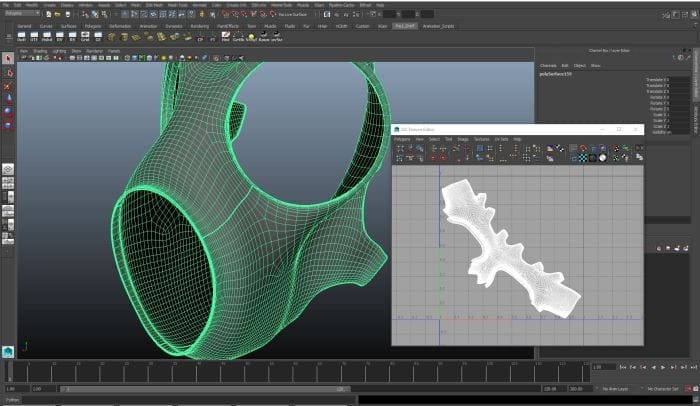
Efficient UV unwrapping is essential for optimizing texture mapping and minimizing distortion. This section delves into effective methods for unwrapping UVs, including seams, planar mapping, cylindrical mapping, and spherical mapping. Additionally, it provides guidance on optimizing UV space utilization and creating UV shells that are easy to work with and edit.
Using Seams for UV Unwrapping
Seams are essential for unwrapping complex models without excessive distortion. They are strategically placed cuts that allow the model to be flattened onto a 2D plane while preserving its overall shape. When placing seams, consider the natural boundaries of the model, such as creases, edges, and corners.
This helps minimize visible seams in the final texture.
Planar Mapping for Flat Surfaces
Planar mapping is ideal for flat or nearly flat surfaces, such as walls, floors, and tabletops. It involves projecting the surface onto a 2D plane, resulting in a distortion-free UV map. Planar mapping is straightforward to apply and produces predictable results.
Cylindrical Mapping for Curved Surfaces
Cylindrical mapping is suitable for cylindrical or tube-like surfaces, such as pipes, pillars, and barrels. It involves projecting the surface onto a cylindrical surface, creating a UV map that wraps around the object. Cylindrical mapping minimizes distortion while preserving the surface’s overall shape.
Spherical Mapping for Rounded Surfaces
Spherical mapping is ideal for rounded or spherical surfaces, such as globes, balls, and helmets. It involves projecting the surface onto a spherical surface, resulting in a UV map that covers the entire object. Spherical mapping minimizes distortion and ensures that textures are applied evenly.
Optimizing UV Space Utilization
Optimizing UV space utilization is crucial for minimizing stretching and distortion. This can be achieved by packing UV shells efficiently, avoiding gaps and overlaps. Additionally, consider the texture resolution and the scale of the model to ensure that textures are applied at an appropriate level of detail.
Creating Easy-to-Edit UV Shells
Creating UV shells that are easy to work with and edit is essential for efficient texturing. This involves organizing UV shells logically, grouping related parts together, and avoiding excessive fragmentation. Additionally, consider the orientation of UV shells to minimize the need for rotation and scaling during texture application.
Dealing with Complex Geometries
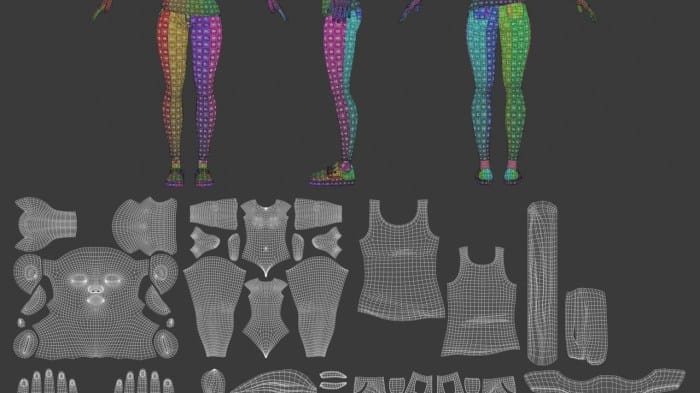
UV mapping complex models presents unique challenges due to intricate shapes and multiple parts. Effective strategies are essential for successful UV mapping of characters, vehicles, and environments.
Handling UV Mapping for Characters
- Consider using multiple UV sets to accommodate different parts of the character, such as the head, body, and limbs.
- Pay attention to the orientation of the UV shells to minimize stretching and distortion.
- Utilize symmetry to reduce the number of UV shells required for symmetrical parts.
Handling UV Mapping for Vehicles
- Divide the vehicle into logical sections, such as the body, wheels, and interior, and create separate UV sets for each.
- Pay attention to the flow of the UV shells to ensure continuity and avoid visible seams.
- Consider using cylindrical or spherical mapping for round objects like wheels and tires.
Handling UV Mapping for Environments
- Utilize tileable textures to reduce the number of unique UV shells required.
- Pay attention to the scale and orientation of the UV shells to ensure proper alignment and repetition of textures.
- Consider using procedural texturing techniques to generate textures that can be easily adjusted and modified.
Texturing and Material Application
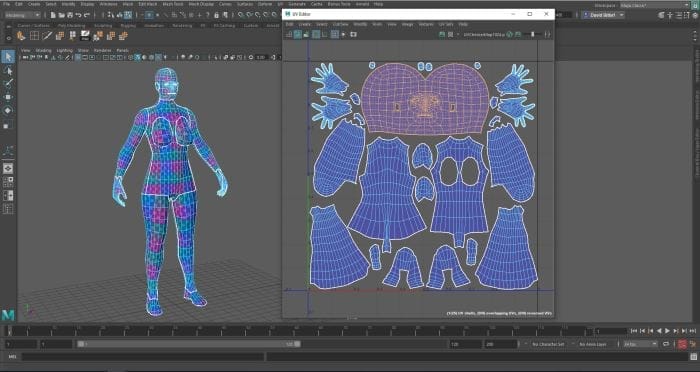
UV mapping plays a crucial role in texturing, enabling the seamless application of textures onto 3D models. It establishes a correspondence between the 2D texture space and the 3D surface, allowing textures to be properly aligned and manipulated.
Creating UV Layouts for Different Texturing Techniques
The UV layout should consider the specific texturing technique employed. For hand-painting, a UV layout that minimizes stretching and distortion is ideal, allowing artists to paint directly onto the model with minimal distortion. For photogrammetry, a UV layout that preserves the original proportions and features of the real-world object is crucial to ensure accurate texture mapping.
For procedural texturing, a UV layout that optimizes the tiling and repetition of patterns is important for creating seamless and consistent textures.
Tips for Efficient UV Mapping for Texturing
- Plan the UV Layout: Before creating the UV layout, consider the intended use of the model, the camera angles, and the areas that will be visible. This helps create a UV layout that prioritizes important areas and minimizes distortion in critical regions.
- Use UV Seams Strategically: UV seams are necessary to break up the model into manageable sections for UV mapping. Place UV seams along natural boundaries or areas where distortion is less noticeable, such as creases or folds in the model.
- Optimize UV Space Utilization: Aim for a UV layout that minimizes wasted space and maximizes the coverage of the texture. This helps reduce texture memory usage and improves texture resolution.
- Consider Texture Resolution: The resolution of the texture should be appropriate for the size of the model and the level of detail required. Higher-resolution textures require more UV space, so it’s important to balance texture quality with UV efficiency.
Troubleshooting Common UV Mapping Issues
UV mapping can present challenges, resulting in issues like stretching, distortion, and overlapping UVs. These problems can hinder the texturing process and lead to poor visual results. Addressing these issues requires careful analysis and methodical solutions.
Identifying Common UV Mapping Problems
- Stretching: UVs that are stretched or elongated can cause textures to appear distorted.
- Distortion: UVs that are distorted or warped can result in textures appearing deformed.
- Overlapping UVs: When UVs overlap, it can lead to incorrect texturing and visual artifacts.
Resolving UV Mapping Issues
To resolve common UV mapping issues, follow these steps:
- Identify the Problem: Carefully examine the UV map to identify the specific issue (stretching, distortion, or overlapping).
- Adjust UV Seams: If stretching or distortion occurs, adjust the UV seams to distribute the UVs more evenly.
- Repack UV Islands: In case of overlapping UVs, repack the UV islands to eliminate overlaps and ensure proper texturing.
- Optimize UV Layout: Optimize the UV layout to minimize stretching and distortion while maintaining proper texture resolution.
Optimizing UV Mapping for Specific Rendering Engines and Software Packages
Different rendering engines and software packages may have specific requirements for UV mapping. To ensure optimal results, consider the following:
- Render Engine Requirements: Consult the documentation of the rendering engine to understand its specific UV mapping requirements.
- Software Package Compatibility: Ensure that the UV mapping software is compatible with the 3D modeling software being used.
- Texture Resolution: Consider the texture resolution required for the specific rendering engine and adjust the UV layout accordingly.
UV Mapping Tools and Plugins
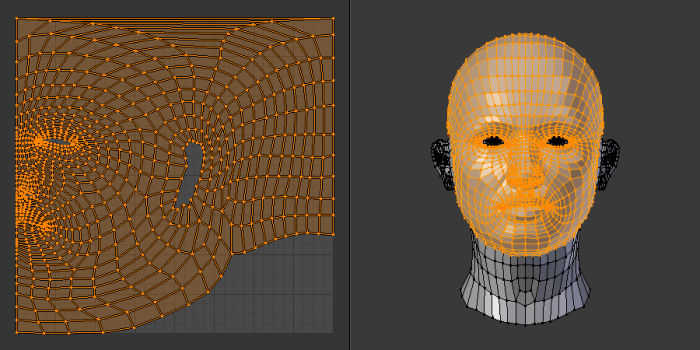
In the realm of 3D modeling, UV mapping tools and plugins serve as invaluable aids, streamlining the process of unwrapping complex geometries and preparing them for texturing. These tools come in a variety of flavors, each boasting unique strengths and catering to specific needs and preferences.
Navigating the landscape of UV mapping tools can be daunting, but understanding their features and capabilities can empower artists to make informed choices, enhancing their workflow and achieving optimal results.
Popular UV Mapping Tools
Among the myriad of UV mapping tools available, a few stand out as industry favorites, renowned for their comprehensive feature sets and user-friendly interfaces.
- 3ds Max Unfold: A powerful UV mapping toolset integrated within 3ds Max, Unfold offers a wide range of automated and manual unwrapping methods, catering to both novice and experienced artists.
- Maya UV Toolkit: Maya’s UV Toolkit is another robust UV mapping solution, providing an array of unwrapping algorithms, texture packing options, and intuitive editing tools.
- RizomUV: Renowned for its speed and efficiency, RizomUV is a standalone UV mapping software that excels in handling complex geometries and large texture sets.
- Headus UVLayout: Headus UVLayout is a versatile UV mapping tool known for its user-friendly interface, extensive unwrapping options, and support for various 3D modeling software.
Features and Capabilities
UV mapping tools offer a diverse range of features and capabilities, empowering artists to tackle the challenges of UV unwrapping with precision and efficiency.
- Automated Unwrapping Algorithms: These algorithms analyze the geometry and automatically generate UV layouts, saving time and effort, particularly for intricate models.
- Manual Unwrapping Tools: Manual unwrapping tools provide precise control over the UV layout, allowing artists to fine-tune the placement of UV shells and optimize texture space.
- Texture Packing: UV mapping tools often include texture packing features, which arrange multiple textures efficiently within a single image, reducing the number of texture files and optimizing memory usage.
- UV Editing Tools: UV editing tools enable artists to manipulate UV shells, adjust their size, shape, and orientation, and perform various operations such as cutting, merging, and scaling.
- UV Visualization: UV mapping tools typically offer visualization options, allowing artists to preview the UV layout on the 3D model, ensuring proper coverage and identifying potential issues.
Selecting the Right Tool
Choosing the right UV mapping tool depends on several factors, including the artist’s skill level, the complexity of the geometry, and the desired workflow.
- Skill Level: Some UV mapping tools are more user-friendly and suitable for beginners, while others require a deeper understanding of UV mapping principles.
- Geometry Complexity: The complexity of the geometry plays a crucial role in tool selection. Some tools excel at handling simple objects, while others are better equipped for intricate models with multiple parts and challenging shapes.
- Workflow Integration: Artists may prefer UV mapping tools that integrate seamlessly with their existing 3D modeling software, ensuring a smooth and efficient workflow.
Best Practices for UV Mapping Workflow

Establishing a systematic and efficient UV mapping workflow is crucial for ensuring consistency and minimizing errors. This section provides tips for organizing UV mapping projects, implementing naming conventions, file management, and version control, as well as emphasizing the importance of regular backups and version control to prevent data loss.
Organizing UV Mapping Projects
- Create a dedicated project folder: Establish a designated folder for each UV mapping project to keep all related files organized and easily accessible.
- Implement naming conventions: Use clear and consistent naming conventions for UV maps, textures, and other project files to simplify identification and avoid confusion.
- Maintain file management: Keep track of UV map versions, texture files, and other project assets using a file management system or software to ensure efficient organization and retrieval.
Version Control and Backups
- Utilize version control systems: Implement a version control system, such as Git or Perforce, to track changes, maintain multiple versions of UV maps and textures, and facilitate collaboration among team members.
- Perform regular backups: Regularly back up project files to a separate storage device or cloud-based backup service to protect against data loss due to hardware failures, software crashes, or accidental deletion.
Advanced UV Mapping Techniques

Beyond the fundamental principles of UV mapping, advanced techniques open up new possibilities for creating high-quality textures and realistic materials. These techniques include multi-texturing, UV packing algorithms, and UV distortion correction.
Multi-texturing: Multi-texturing involves assigning multiple textures to a single surface, allowing for greater detail and realism. For example, a character’s skin may have a diffuse texture, a specular texture, and a normal map, each contributing to the final appearance.
UV Packing Algorithms
UV packing algorithms are mathematical methods for efficiently arranging UV shells within the UV space. These algorithms aim to minimize distortion and maximize texture resolution. Common UV packing algorithms include:
- Maximum Rectangle Packing: Arranges UV shells into the largest possible rectangles, minimizing wasted space.
- Bin Packing: Divides the UV space into bins and assigns UV shells to these bins, optimizing space utilization.
- Springs-based Packing: Simulates springs between UV shells, allowing them to move and adjust to minimize distortion.
UV Distortion Correction
UV distortion correction techniques address the distortion that can occur when UV shells are stretched or compressed during the unwrapping process. These techniques aim to minimize distortion and preserve the integrity of the texture.
Common UV distortion correction techniques include:
- Conformal Mapping: A mathematical technique that preserves angles and shapes, minimizing distortion.
- Relaxation Methods: Iterative methods that gradually adjust UV shell positions to reduce distortion.
- Automatic Weighting: Assigns weights to UV vertices based on their importance, allowing for selective distortion correction.
Industry Insights and Case Studies
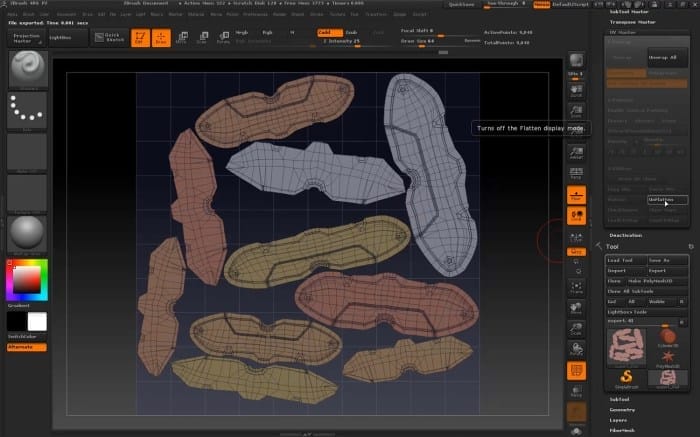
Exploring industry insights and case studies unveils the practical applications and challenges faced by professionals in their UV mapping workflow. These real-world examples provide valuable lessons and best practices that can be incorporated into your own UV mapping approach.
Case studies showcasing exceptional UV mapping techniques highlight the creativity and problem-solving skills of experienced artists. These examples demonstrate how to handle complex geometries, optimize texture resolution, and achieve visually appealing results.
Insights from Industry Professionals
- UV Mapping Workflow Optimization: Industry experts emphasize the importance of organizing and streamlining the UV mapping process to maximize efficiency. This includes creating a consistent naming convention, utilizing automated tools for unwrapping, and employing proper UV layout techniques.
- Collaboration and Communication: Effective communication between artists and technical teams is crucial for successful UV mapping. This ensures that the UVs align with the desired artistic vision and technical requirements, resulting in seamless integration into the final product.
- Balancing Detail and Efficiency: Professionals stress the need to strike a balance between maintaining sufficient detail in the UVs while maintaining efficiency. This involves optimizing UV space, minimizing stretching and distortion, and utilizing appropriate texture resolutions.
Case Studies: Exceptional UV Mapping Techniques
- Character Creation for Animation: A case study involving the creation of a 3D character for an animated film demonstrates how meticulous UV mapping techniques can result in realistic and visually appealing character models. The artists employed a combination of manual unwrapping and automated tools to achieve optimal UV layouts, ensuring seamless animation and texture application.
- Game Asset Creation: In a game development project, the UV mapping process played a critical role in optimizing texture usage and reducing draw calls. The team utilized UV packing algorithms and texture atlases to efficiently distribute UVs across multiple objects, resulting in improved performance and visual quality.
- Architectural Visualization: A case study in architectural visualization showcases the use of UV mapping to create realistic textures for building models. The artists employed techniques such as photogrammetry and procedural texturing to achieve highly detailed and immersive environments.
Closure
As you embark on your UV mapping journey, remember that practice is the key to mastery. Experiment with different techniques, explore various software tools, and seek inspiration from industry professionals. With dedication and perseverance, you’ll transform into a skilled UV mapping artist, capable of producing exceptional 3D models that leave a lasting impression.
So, embrace the challenge, unleash your creativity, and let your models shine with the brilliance of expertly crafted UV maps.
FAQs
What are the common challenges faced in UV mapping?
UV mapping can present challenges such as stretching, distortion, and overlapping UVs. These issues can arise due to complex geometries, improper UV layout, or incorrect UV mapping techniques.
How can I optimize UV space utilization?
To optimize UV space utilization, aim for a clean and organized UV layout. Utilize techniques like packing algorithms, minimizing stretching and distortion, and creating UV shells that are easy to work with and edit.
What are some popular UV mapping tools and plugins?
There are numerous UV mapping tools and plugins available, each with its own strengths and weaknesses. Some popular options include Unfold3D, RizomUV, UVLayout, and Headus UVPackmaster.
How can I establish a systematic approach to UV mapping?
To establish a systematic approach, organize your UV mapping projects with naming conventions, file management, and version control. Regularly back up your work and utilize version control to prevent data loss.
What are some advanced UV mapping techniques?
Advanced UV mapping techniques include multi-texturing, UV packing algorithms, and UV distortion correction. These techniques can enhance texture quality, create realistic materials, and optimize UV mapping for specific rendering engines.



